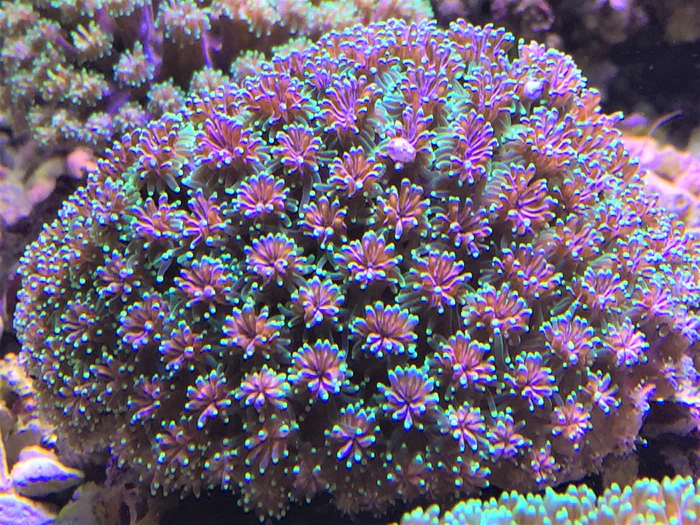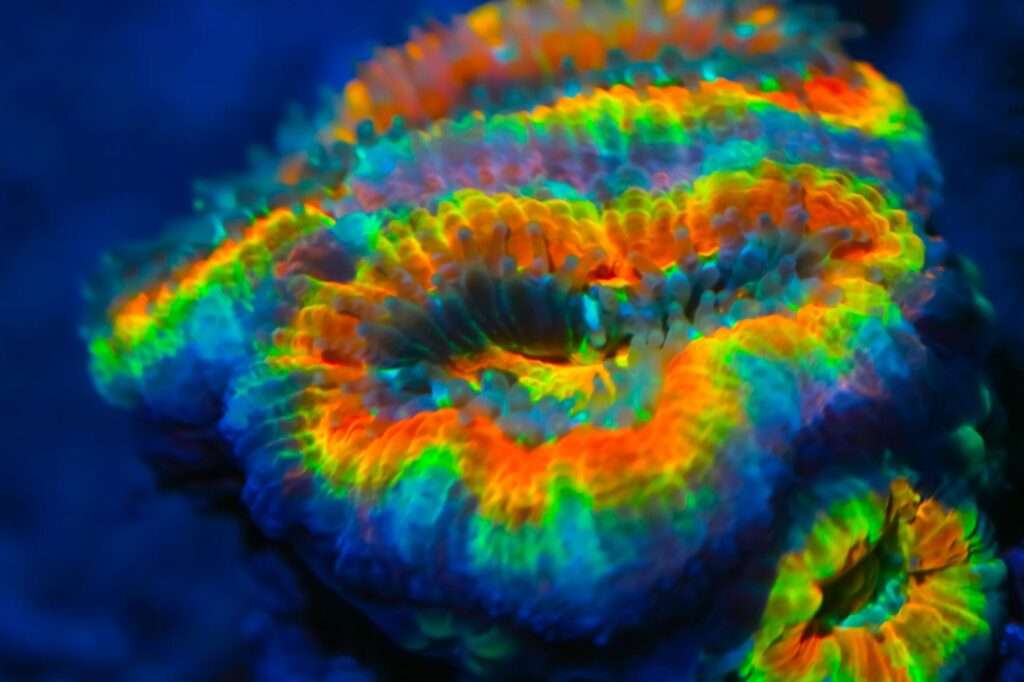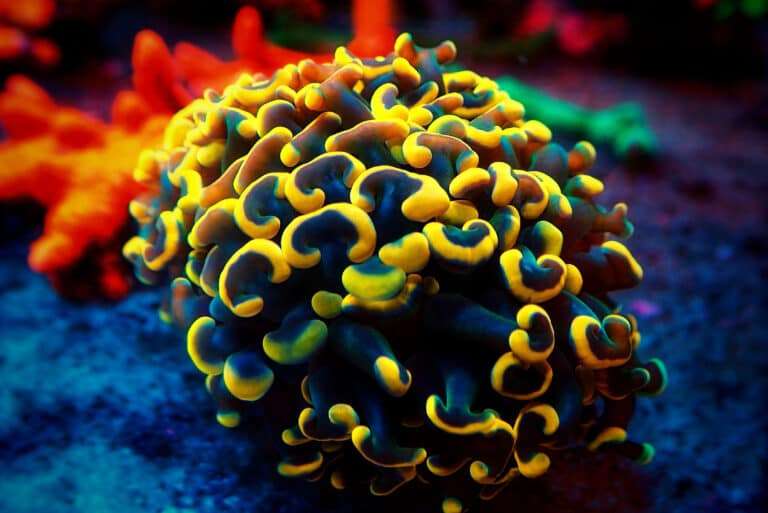
Galactic Coral, a common large polyp stony (LPS) coral that many reef enthusiasts own or would like to have in their collection is Galaxea fascicularis. It is highly lovely despite having a skeleton that is quite fragile and brittle. Its starburst-like polyps with white tips give it the appearance of a glittering crystal. The motion of the tentacles as they sway in the tank is captivating. The untamed Galaxy Massive coral colonies typically have structures that are columnar or encrusting, though occasionally spires and branches can also be seen. They are widespread in a variety of habitats and frequently supplant all other coral species in inshore fringing reefs. Their thin skeleton is made up of clusters of branching tubular corallites that are joined by minuscule, rough plates. The structure is then covered in live tissue on its outermost portions. It needs to be handled carefully because this provides for a delicate and easily broken structure.
Habitat
Linnaeus published the first account of the Galaxy Coral, Galaxea fascicularis, in 1767. Galaxy corals have been bred in captivity and are frequently imported from Indonesia.
Galaxea species can be found in reef areas that are shielded from powerful waves at depths of 9 to 82 feet (3 to 25 meters). They are widespread in a variety of habitats and frequently supplant all other coral species in inshore fringing reefs. Strong stinging tentacles enable the G. fascicularis to fend off predators and aid in the capture of small prey.
Morphology
The Galaxea genus is large, with most of its forms being columnar or encrusting, however spires and branches are occasionally seen as well. Their thin skeleton is made up of clusters of branching tubular corallites that are joined by minuscule, rough plates. The structure is then covered in live tissue on its outermost portions. It’s interesting to note that a lot of these growth patterns are brought on by uninteresting organisms, like the date mussel Lithophaga, which breaks apart enormous colonies and develops sub-branching growth forms.
Green, red, brown, gray, and pink Galaxea corals are available, as well as combinations of these colors. They frequently have white tips or occasionally a milder variant of their colors. The tentacles of the polyps, which can be up to 6mm in diameter, are frequently stretched during the day. Up to 12″ (30 cm) long sweeper tentacles emerge at night. Galaxy Coral (G. fascicularis) colonies can spread out in the wild to a width of up to 3.3 feet (1 m). It has irregular edges and is typically fashioned like a ball or dome when kept in captivity. Another structure has narrow branches and is short.
In Captivity

- Feeding
The Galaxea corals have evolved a number of feeding techniques. Many of its nutrients are obtained through a symbiotic interaction with a sea algae called zooxanthellae. They can also take in dissolved organic substances and planktonic creatures as well as food particles from the water column.
Filter feeding/Invert food should be provided in captivity, along with shrimp and fish scraps.
- Social Interactions and Compatibility
The aggressive coral G. fascicularis can readily harm its neighbours with its stinging sweeper tentacles. It has sweeper tentacles that can reach a length of 12″ (30 cm). They emerge at night and have a rather potent sting, so give other corals some room around them. Reduced water flow over the coral can aid in preventing the formation of longer, thinner sweepers by the tentacles. It is also a good idea to feed the Galaxea genus to prevent them from using their tiny stingers to “seek for food.” Numerous commensal organisms inhabit the spaces between the polyps in the Galaxea genus. Crabs, mussels, sponges, and shrimp are a few examples. Getting a Galaxy Coral with these critters is actually quite a privilege.
Table





